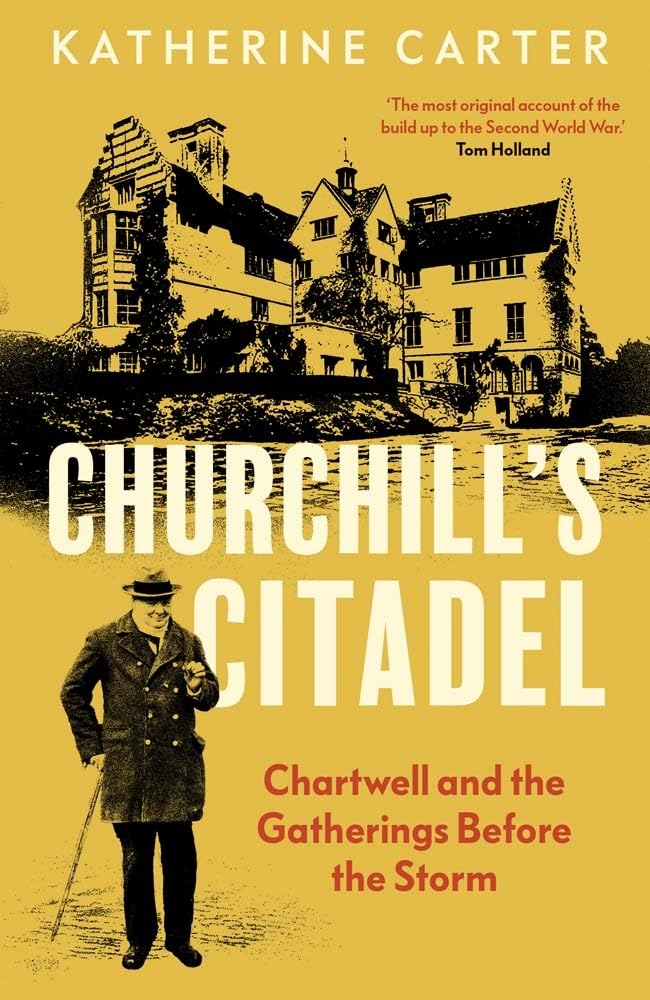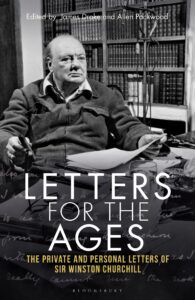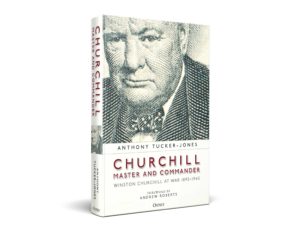Bulletin #196 Sep — 2024
The Wilderness Years

To view in full, right click and choose, "View in New Tab"
September 1, 2024
A Double Take
Katherine Carter, Churchill’s Citadel: Chartwell and the Gatherings Before the Storm, Yale University Press, 2024, 315 pages, $30/£20. ISBN 978–0300270198
Adrian Phillips, Winston’s Bandits: Churchill and His Maverick Friends, Biteback, 2024, 267pages, £25. ISBN 978–1785907890
Review by DAVID LOUGH
There is an old saying about London’s buses that you wait ages for one to turn up and then two or more arrive in a bunch. So, it is this autumn with books about Winston Churchill in the 1930s, his years in the political wilderness. It is precisely forty years since Martin Gilbert published his single volume called The Wilderness Years. Now both Katherine Carter and Adrian Phillips have written finely researched new volumes about this period within a month of each other. Fortunately, the two authors have taken entirely different, yet complementary approaches to the subject. So, the only sensible decision for students of Churchill is to read both.
For the last decade Katherine Carter has worked for Britain’s National Trust as curator of Chartwell, Winston Churchill’s country home perched high above Kent’s Weald. During her early years in the post, she lived in a set of rooms at the top of the house, living and breathing its history for twenty-four hours a day. It was at Chartwell that Churchill dictated and polished most of his writing as a historian; a century later, Carter has picked up her own pen to write a first (but surely not last) work of history.
Suitably it deals with the part that Chartwell itself played in Churchill’s political life during the 1930s. The author’s stated aim is to change the popular image of the house from the “scenic backdrop” to which Churchill would retreat from London when he felt a need to relax by feeding the fish, stroking the cat, painting, or laying bricks. Instead, Carter wants to reposition Chartwell at the “centre-stage” of Churchill’s political life in the 1930s, the nerve centre of his campaign to persuade the British government and people of the need to re-arm in the face of the growing Nazi menace. The book opens with Churchill’s visit to Germany of August 1932, soon after Adolf Hitler came to power. Churchill had planned the trip for historical research, but he came away with an early instinct for what Hitler and his government might get up to.
Carter’s secret weapon is her effective use of the book in which visitors to Chartwell signed their names during this period, whether they came for a meal or stayed overnight. Tourists today can examine a single page of the actual book, protected by a locked case, in the hallway. The full list of signatories and dates, however, is also available as a digital resource onsite at Chartwell accessible to all visitors. Carter bases the structure of her book on carefully selecting a dozen visitors and meticulously researching their backgrounds, why Churchill invited them, how the visits went and the use to which Churchill then put the information that he gleaned from them.
It is the flair with which Carter has chosen her cast that ultimately makes this book a pleasure and an education to read. Those chosen provide not only suitable entry points to the more important events of the decade, but a striking range of perspectives on them. Some selections no doubt suggested themselves reasonably easily, such as Germany’s former chancellor Heinrich Brüning or France’s future foreign minister (and Vichy collaborator) Pierre Étienne Flandin. Others such as Albert Einstein, Ewald von Kleist-Schmerzin, Richard Coudenhove-Kalergi or Quo Tai-chi are much less obvious choices yet prove to be real eye-openers. The pace takes time to build, but so did the tempo of the decade’s political events. At the end we have twelve very different cameo portraits, but they hang together so well that the combined effect is far greater than the sum of their parts.
Einstein brings his personal testimony of the early Nazi persecution of Jews in Germany; Kleist is an official spokesperson for dissident German generals who want reassurances from the British and French governments before attempting any coup against Hitler; the Austrian Coudenhove-Kalergi delivers insights into Hitler’s designs on central Europe; Quo Tai-chi, a Chinese diplomat posted in London, brings with him an academic called Peng-chun Chang who provides first hand testimony of Japan’s aggression in mainland China. Churchill’s subsequent warnings about the potential for Japan and Germany to find common cause were not only ignored at the time but have seldom been unearthed by historians.
A notable thread throughout the book is the gap between Chartwell and Westminster. For financial reasons Churchill needed to keep himself busy writing at Chartwell throughout most of the decade, so he preferred his visitors to journey to Kent rather than vice versa. Another advantage of this arrangement was that visitors usually loved Chartwell with its setting and the sparkling hospitality of the family, so they relaxed and spoke more openly than they might have done in London. On the other hand, there was the risk that one of the members of the extended Churchill family usually present at the meal would spill the beans to the press afterwards. This is exactly what a Romilly cousin did after the second visit of Heinrich Brüning, destroying Churchill’s productive relationship with former German chancellor at a stroke.
A more serious problem was that Churchill could not always sense the ups and downs of the political temperature at Westminster from Chartwell. This difficulty was manifest during the long controversy over Indian independence which Carter does not cover. It reappeared during the Abdication crisis of 1936 when Churchill returned to Westminster after a weekend of plotting on the king’s behalf at Chartwell, only to find that events at Westminster had moved on. His misjudged intervention in the House of Commons on the Monday afternoon would set back the impact of his more significant warnings about the dangers of German rearmament. And when the march toward war accelerated during the final days of August 1939, Churchill had no choice but to abandon Chartwell and base himself at Morpeth Mansions, his flat in Westminster.
Nonetheless Carter paints a rich picture of life at Chartwell in the 1930s, its politics rightly sharing the limelight with the writing, painting, bricklaying, and conversation over food and wine. As the prime mover behind the recent recreation of the secretaries’ room at Chartwell, as it stood in the 1930s, she is naturally sympathetic toward all those who kept the Chartwell show on the road, almost around the clock.
There is one group of visitors to Chartwell whom Carter does not attempt to cover. Max Beaverbrook, Robert Boothby, Brendan Bracken, and Frederick Lindemann were in such regular attendance at Churchill’s home as his close associates or aides that any single visit by them would not sit easily within the structure of Churchill’s Citadel. No matter because they form the focus of Adrian Phillips’s book about the wilderness years. Winston’s Bandits: Churchill’s Maverick Friendsstarts at an earlier point than Carter and continues until the end of the Second World War, but a good two-thirds of its content are concerned with the 1930s. Phillips’s brushstrokes are finer and more detailed than Carter’s, particularly when it comes to detailing the material about German rearmament that Churchill’s aides collected and analysing the use he made of it. He is prepared to be critical of those he calls the bandits and of their boss. His portrait of Max Beaverbrook is particularly unsympathetic. The best portraits are those of Brendan Bracken and the often mysterious Professor Lindemann.
Lindemann was no easy colleague, and Phillips describes his many battles with the traditionalists of the RAF or Britain’s wider defence establishment with astonishing detail and clarity. Indeed, the book on occasions reads more as an early history of the British and German air forces than as a collective portrait of Churchill’s closest aides. Yet it is salutary to realise Phillips is dealing with a level of analysis that Churchill demanded of his aides; and it was his command of that detail that brought him such attention as the policy of appeasement faltered.
Despite the peccadillos of each of Beaverbrook, Boothby, Bracken and Lindemann, it remains a mystery why Phillips’s title awards them the collective sobriquet of bandits. “Mavericks,” as in the subtitle, seems closer to the mark. Each was possessed of an unorthodox, eccentric but free spirit and attracted by similar qualities in the man to whom they hitched their star.
Both books will find well-deserved spaces on many Churchill bookshelves. I suspect Churchill’s Citadel will remain a favourite in Chartwell’s own bookstore for a long time to come.
David Lough is the author of No More Champagne: Churchill and His Money (2015).
Subscribe
WANT MORE?
Get the Churchill Bulletin delivered to your inbox once a month.






